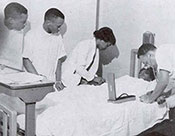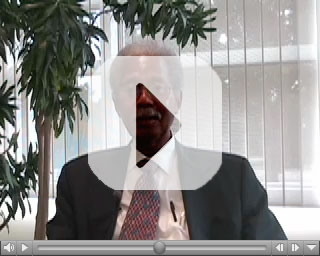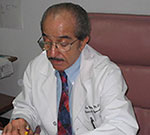Continued Integration in Medical Education (1955-1980, Section 5)
Progress toward the complete integration of U.S. medical schools and hospitals was slow and inconsistent, as the Houston case reveals. By 1962, eighteen medical schools in the South accepted black students, although the number of such students in any schools other than Meharry and Howard University remained small.
In 1962, Dr. Howard A. Rusk, a white physician and leading expert in rehabilitation medicine, wrote an article for the New York Times on the continuing efforts to integrate the nation�s medical schools. Rusk cited the National Medical Fellowship Inc. as an important organization in this regard. Begun after World War II, this entity provided scholarships for promising black students and loans to practicing physicians for continuing education. Nonetheless, Dr. Rusk observed that the number of African-American physicians was still disproportionately low and thus left the black community underserved. �As compared to a total national ratio of 132 physicians to each 100,000 persons, there are but twenty Negro physicians for each 100,000 Negroes.� 1
Perhaps because medical students were adults, the integration of these schools did not spark the same hostility that surrounded desegregation at the primary, secondary, and university levels across the South. In fact, integration of most institutions of higher education in Houston occurred more peacefully, albeit on a protracted schedule.
UTMB had been a pioneer among southern schools when it admitted Dr. Herman Barnett in 1949 and another 14 African-American men in the following seven years. In 1962, Dr. Virginia Stull became the first African-American woman to enter UTMB. While welcomed in the classroom, however, Jim Crow segregation limited African-American students’ clinical training to a black hospital in Galveston where they were separated from their fellow white students, although “for their pediatrics training they attend both white and Negro children.” 2
Dr. Robert Bacon, on the other hand, fondly remembers Dr. Michael O’Heroon, an urologist at St. Joseph Hospital who became his mentor. More than two years before African-American physicians were extended privileges at St. Joseph in the mid-1960s, Dr. O’Heroon arranged for Dr. Bacon to operate on patients there.
Baylor University College of Medicine hospital first admitted African-Americans to its residency program in the early 1950s, but its medical school did not accept its first African-American student until 1969. The number rose to thirteen by 1974. The National Medical Fellowships, Inc. and other organizations encouraged more and more African-Americans to attend medical school “through fellowships and loans [to] eliminate or minimize the economic barriers to medical education.” 3 By the late 1960s and 1970s, many of the nation’s universities established admission quotas to ensure that minority students could attend college, medical school, or other professional schools.
Despite advances, discrimination in the workplace continued throughout the 1960s and 1970s. Dr. Dezra White, a native of Beaumont, Texas, graduated from UTMB in 1968 and completed his residency in Obstetrics and Gynecology at St. Joseph Hospital in Houston. He recalls that the chief of surgery at UTMB and some leading physicians and administrators in Houston’s hospitals regularly addressed vulgar and racist remarks toward African-Americans.
Citations
- Dr. Howard A. Rusk, M.D., �Negro Medical Gains ; Discrimination is Steadily Decreasing in Medical Schools over the Nation,� New York Times, 9 September 1962, p. 82.
- Integration Test in Texas Studied: University’s Medical Branch in Galveston has Admitted Negroes for Six Years,” The New York Times, 24 July 1955.
- Howard A. Rusk, “Negro Medical Gains; Discrimination is Steadily Decreasing in Medical Schools Over the Nation Progress in South Negro Physician Shortage Booklet Fills Gap,” The New York Times, 9 September 1962.




